Don't wanna be here? Send us removal request.
Text
I had physics lab I and II a few years ago. I remember clearly in my head it was one of the most stressful one credit hour classes I have ever taken. I have to write about 50 pages of lab report for every single experiment, not to mention on how long was the data analysis, bla bla bla. One thing I can never forget from that class is the lab supervisor. He always told us in lab: “do great things for your country”
and, this happened...
http://www.kentucky.com/news/local/education/article75282757.html
what a hyp·o·crite (period).
human, being human. what do we expect?
I am done.
7 notes
·
View notes
Text
TRYING TO GET WORK DONE AT HOME
Throwback Thursday from April 2014!

394 notes
·
View notes
Text
Everyone is struggling in different ways and at different levels. Recognize your own struggle and don't belittle the struggle of others. Better yourself and those around you at the same time. We're all in this together.
"By the fleeting time! Man is verily at loss. Except for those who have faith, work deeds of righteousness, enjoin one another with upholding truth, and practice patience and constancy." (Surah Al Asr, Chapter 103 of the Quran)
----
Repost: Ustd. Omar Suleiman
1 note
·
View note
Text
When you suddenly remember someone you love dearly and it makes you miss them like crazy, ah, it's so hard. I feel like crying. I miss everyone. Sending you all Dua'a from Lexington. xoxo
0 notes
Text
Waduh, topic tulisan-tulisan di atas menggelitik banget. worth reading and thinking though.
here is my opinion about it:
Pernikahan adalah topic yang sangat sensitive dan sakral. yaelah, siapa saya talking about nikah yak? sok tahu banget. hahaha. But anyway, looking at everyone around me. I now know and realized why or what it takes to get married.
Betul banget, nikah enggak bisa cuma gara-gara cinta. bullsh*t lah kalo ada orang yang bilang “aku cinta banget sama kamu pokoknya sampe maut memisahkan aku mau sama kamu selamanya. ayok kita nikah?”
Nah, sekarang pertanyaannya. kenapa kita harus nikah?
Jujur, aku juga enggak tahu sih. cuma yang belakangan ini aku pelajarin. Menurut agama nikah itu jalan masuk surga. kan emang tujuan kita hidup di dunia ini buat masuk surga? ya itu, nikah bisa buat kita masuk surga. But again, enggak segampang balikin tangan. mangkanya, kalo emang beneran mau nikah lurusin dulu niatnya. dari nikah kita bisa dapet partner ibadah bareng-bareng. di mana pun kapan pun. terus bisa saling do’ain satu sama lain. wah, asik kan! terus apa tujuannya nikah terus punya anak? nah, si anak tadi itu modal buat masuk surga juga bagi orang tuanya, karena do’a anak yang soleh/solehah bisa mengantarkan orang tua mereka masuk surga. oleh karena itu bersyukurlah seorang pasangan yang bisa punya anak. tapi bukan lantas pasangan yang tidak bisa punya anak enggak beruntung yah. mereka juga sama beruntungnya karena ya emang ada banyak cara buat masuk surga.
Jadi, nikah bukanlah segalanya. emang itu salah satu jalan masuk surga. tapi lantas enggak perlu banget-banget lah harus nikah. pokoknya harus nikah umur segini dapet suami/istri ini. janganlah pengen nikah buru-buru. Kuncinya cuma satu. luruskan niat, perbaiki diri. kalo emang belum siapa, enggak osah di paksa-paksain. masalah banget di katain orang enggak laku? bodo amat. emang mereka yang punya hidup kalian. enggak kan. yaudah. enjoy your life! it’s worth it, insyaAllah!
Cheers :)
toxic family
coba gue nanya ke orang-orang. kenapa sih kita harus nikah? kalo kata nyokap, biar di hari tua nanti, kita ada yang ngurusin. ada yang bisa jelasin implikasi statement ini? buat gue, itu alasan yang jahat banget. jadi lo kawin buat bikin anak trus mau ngejadiin dia caregiver lo pas tua? anying. that’s rude, you know. bangzad. karena secara gak langsung, lo ngorbanin orang lain buat keberlangsungan hidup lo sendiri.
lalu buat apa lo kawin sama orang yang setelah 26tahun nikah aja lo tau lo gak bahagia? trus lo susah payah menahan emosi demi keadaan? coba jelasin ke gue. lalu kenapa lo harus nikah sama yang seiman kalo orang yang paham dan tau cara ngtreat lo adalah non muslim? tai lah keadaan hahahaha.
inti dari tulisan ini, sebenernya kawin itu buat apa sih? apa guna kawin kalo lo cuma bakal membangun keluarga yang gak sehat dan berdampak pada mental health lo, pasangan lo dan anak lo? penting banget buat bikin anak? jelasin ke gue. jelasin.
salam bangsat dari anak tunggal yang berasal dari toxic family
51 notes
·
View notes
Text
an engineer trying to save the world by designing bioreactor process plant for producing stem cell to treat spinal cord injury patients.
Legit, only got 4-5 hours of sleep since saturday night. meaning that the average of sleep I got so far in these past few days is about 1.67 hour.
By the time I finish this design project. no one can take me out of my bed. no one. I am telling you.
0 notes
Text
What You Should Know About Scott Kelly’s #YearInSpace
1. It’s Actually More Like a Three-Year Mission

NASA astronaut Scott Kelly and Russian cosmonaut Mikhail Kornienko may have had a year-long stay in space, but the science of their mission will span more than three years. One year before they left Earth, Kelly and Kornienko began participating in a suite of investigations aimed at better understanding how the human body responds to long-duration spaceflight. Samples of their blood, urine, saliva, and more all make up the data set scientists will study. The same kinds of samples continued to be taken throughout their stay in space, and will continue for a year or more once they return.
2. What We Learn is Helping Us Get to Mars

One of the biggest hurdles of getting to Mars is ensuring humans are “go” for a long-duration mission and that crew members will maintain their health and full capabilities for the duration of a Mars mission and after their return to Earth. Scientists have solid data about how bodies respond to living in microgravity for six months, but significant data beyond that timeframe had not been collected…until now. A mission to Mars will likely last about three years, about half the time coming and going to Mars and about half the time on Mars. We need to understand how human systems like vision and bone health are affected by the 12 to 16 months living on a spacecraft in microgravity and what countermeasures can be taken to reduce or mitigate risks to crew members during the flight to and from Mars. Understanding the challenges facing humans is just one of the ways research aboard the space station helps our journey to Mars.
3. The Science Will Take Some Time

While scientists will begin analyzing data from Kelly and Kornienko as soon as they return to Earth, it could be anywhere from six months to six years before we see published results from the research. The scientific process takes time, and processing the data from all the investigations tied to the one-year mission will be no easy task. Additionally, some blood, urine and saliva samples from Kelly and Kornienko will still be stored in the space station freezers until they can be returned on the SpaceX Dragon spacecraft. Early on in the analytical process scientists may see indications of what we can expect, but final results will come long after Kelly and Kornienko land.
4. This Isn’t the First Time Someone Has Spent a Year in Space

This is the first time that extensive research using exciting new techniques like genetic studies has been conducted on very long-duration crew members. Astronaut Scott Kelly is the first American to complete a continuous, year-long mission in space and is now the American who has spent the most cumulative time in space, but it’s not the first time humans have reached this goal. Previously, only four humans have spent a year or more in orbit on a single mission, all aboard the Russian Mir Space Station. They all participated in significant research proving that humans are capable of living and working in space for a year or more.
Russian cosmonaut Valery Polyakov spent 438 days aboard Mir between January 1994 and March 1995 and holds the all-time record for the most continuous days spent in space.
Cosmonaut Sergei Avdeyev spent 380 days on Mir between August 1998 and August 1999.
Cosmonauts Vladimir Titov and Musa Manarov completed a 366-day mission from December 1987 to December 1988.
5. International Collaboration is Key

The International Space Station is just that: international. The one-year mission embodies the spirit of collaboration across countries in the effort to mitigate as many risks as possible for humans on long-duration missions. Data collected on both Kelly and Kornienko will be shared between the United States and Russia, and international partners. These kinds of collaborations help increase more rapidly the biomedical knowledge necessary for human exploration, reduce costs, improve processes and procedures, and improve efficiency on future space station missions.
6. So Much Science!

During Kelly’s year-long mission aboard the orbiting laboratory, his participation in science wasn’t limited to the one-year mission investigations. In all, he worked on close to 400 science studies that help us reach for new heights, reveal the unknown, and benefit all of humanity. His time aboard the station included blood draws, urine collection, saliva samples, computer tests, journaling, caring for two crops in the Veggie plant growth facility, ocular scans, ultrasounds, using the space cup, performing runs with the SPHERES robotic satellites, measuring sound, assisting in configuring cubesats to be deployed, measuring radiation, participating in fluid shifts testing in the Russian CHIBIS pants, logging his sleep and much, much more. All of this was in addition to regular duties of station maintenance, including three spacewalks!
7. No More Food in Pouches

After months of eating food from pouches and cans and drinking through straws, Kelly and Kornienko will be able to celebrate their return to Earth with food of their choice. While aboard the space station, their food intake is closely monitored and designed to provide exactly the nutrients they need. Crew members do have a say in their on-orbit menus but often miss their favorite meals from back home. Once they return, they won’t face the same menu limitations as they did in space. As soon as they land on Earth and exit the space capsule, they are usually given a piece of fruit or a cucumber to eat as they begin their initial health checks. After Kelly makes the long flight home to Houston, he will no doubt greatly savor those first meals.
8. After the Return Comes Reconditioning

You’ve likely heard the phrase, “Use it or lose it.” The same thing can be said for astronauts’ muscles and bones. Muscles and bones can atrophy in microgravity. While in space, astronauts have a hearty exercise regimen to fight these effects, and they continue strength training and reconditioning once they return to Earth. They will also participate in Field Tests immediately after landing. Once they are back at our Johnson Space Center, Functional Task Tests will assess how the human body responds to living in microgravity for such a long time. Understanding how astronauts recover after long-duration spaceflight is a critical piece in planning for missions to deep space.
9. Twins Studies Have Researchers Seeing Double

One of the unique aspects of Kelly’s participation in the one-year mission is that he has an identical twin brother, Mark, who is a former astronaut. The pair have taken part in a suite of studies that use Mark as a human control on the ground during Scott’s year-long stay in space. The Twins Study is comprised of 10 different investigations coordinating together and sharing all data and analysis as one large, integrated research team. The investigations focus on human physiology, behavioral health, microbiology/microbiome and molecular/omics. The Twins Study is multi-faceted national cooperation between investigations at universities, corporations, and government laboratories.
10. This Mission Will Help Determine What Comes Next

The completion of the one-year mission and its studies will help guide the next steps in planning for long-duration deep space missions that will be necessary as humans move farther into the solar system. Kelly and Kornienko’s mission will inform future decisions and planning for other long-duration missions, whether they are aboard the space station, a deep space habitat in lunar orbit, or a mission to Mars.
Make sure to follow us on Tumblr for your regular dose of space: http://nasa.tumblr.com
3K notes
·
View notes
Video
youtube
Apparently someone just rendered Monica’s apartment from FRIENDS using Unreal Engine.
900 notes
·
View notes
Photo










Watch: Leonardo DiCaprio calls to end climate change in Oscar acceptance speech.
242K notes
·
View notes
Photo








Very strange things happen to your body if you spend a year in space
NASA Astronaut Scott Kelly returns to Earth Tuesday night after spending almost a year in space.
But his 340 days aboard the International Space Station (ISS) haven’t been all fun and games.
Our bodies evolved on Earth, so they’re not built for weightlessness — which is exactly why NASA plans to use Kelly to study the long-term effects of spaceflight the human body.
7K notes
·
View notes
Text
Dua of Desperation
رَبِّ إِنِّي لِمَا أَنْزَلْتَ إِلَيَّ مِنْ خَيْرٍ فَقِيرٌ
Rabbi inni limaa anzalta ilayya min khayrin faqeer
“O my Sustainer! Verily, in dire need am I of any good which Thou mayest bestow upon me!” [28:24]
17K notes
·
View notes
Photo
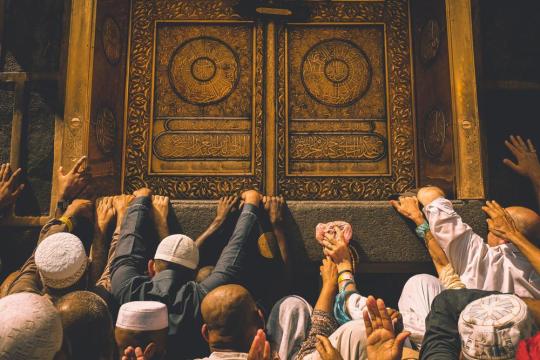
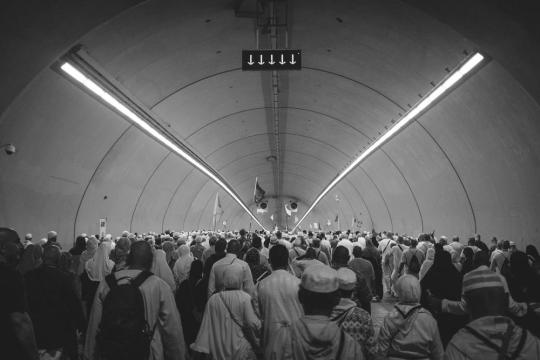
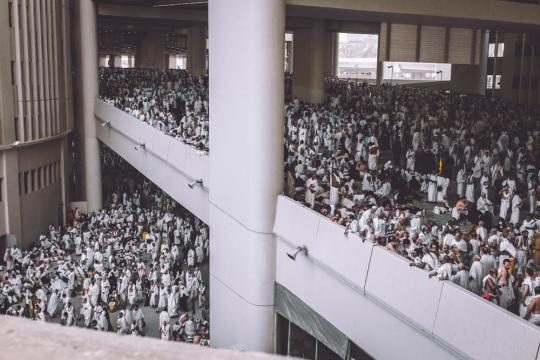
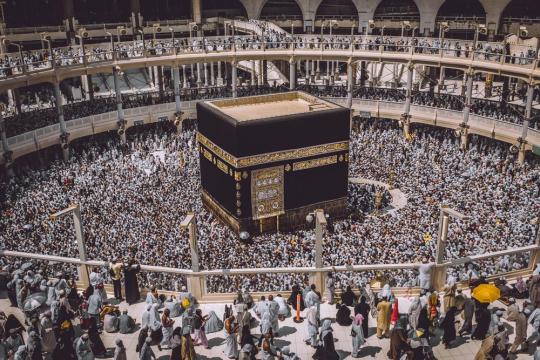
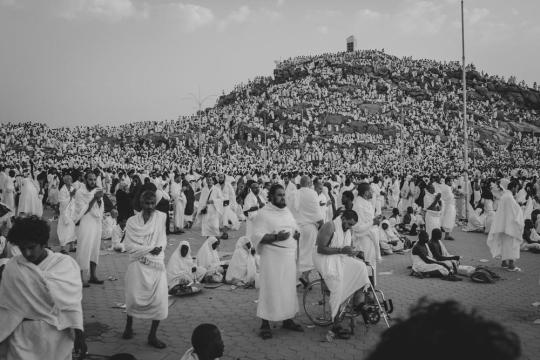
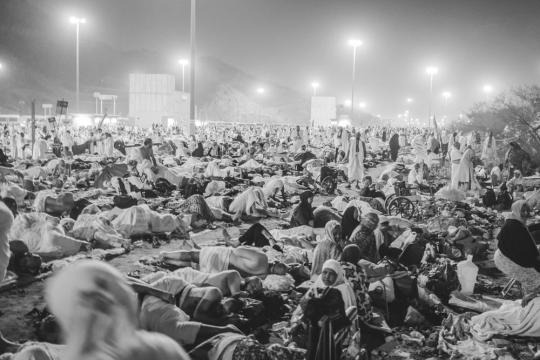
Intimate Photos From Inside Mecca During the World’s Largest Gathering | VICE Canada | VICE
11K notes
·
View notes
Text
Dasar setan!
Sekarang dunia internet buat orang pada ga mau kalah saingan. Mesti banget semua orang tahu lagi ngapain, makan apa, sama siapa, lagi kasmaran atau galau, etc etc. Dih! Setan pasti sekarang lagi party atas kemenangan mereka Karena sukses menghasut manusia-manusia rentah godaan macam Kita-kita ini. Bruh, now I don't know if technology actually is a good thing or a bad thing that ever happened to this world we live in. You tell me!
0 notes


















